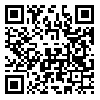Abstract
Objectives: To design a short questionnaire on subjective well-being and the assessment of its validity and reliability. Method: Using references, a set of questions was gathered and constructed, and was assessed in two phases. In the first phase, it was randomly administered to 70 Mobarake Steel Complex personnel in Isfahan, Iran, and in the second phase it was administered to 40 personnel who had referred to a counseling center subsequent to a diagnosis of depressive disorder and anxiety via interview-as well as 166 non-referred personnel in a random manner. Internal consistency, content validity, diagnostic validity, reliability, cut-off points, sensitivity and specificity of the questionnaire and its measurement error were calculated using correlation, analysis of variance, independent t, discriminate analysis and factor analysis. Results: The results of factor analysis showed four sub-scales: vitality, life determination, neuroses, and stress-depression. Cronbach’s alpha for these four subscales was higher than 0.8. The difference between the normal and the patient group (p<0.0001) indicated the validity of the questionnaire. Cut-off point, sensitivity and specificity of this questionnaire were 1.9%, 67.5%, and 78% respectively. Conclusion: Considering its favorable psychometric features, this questionnaire could be used for research, diagnostic and treatment purposes.
Type of Study:
Original Research |
Subject:
Psychiatry and Psychology Received: 2010/11/13 | Published: 2010/11/15




